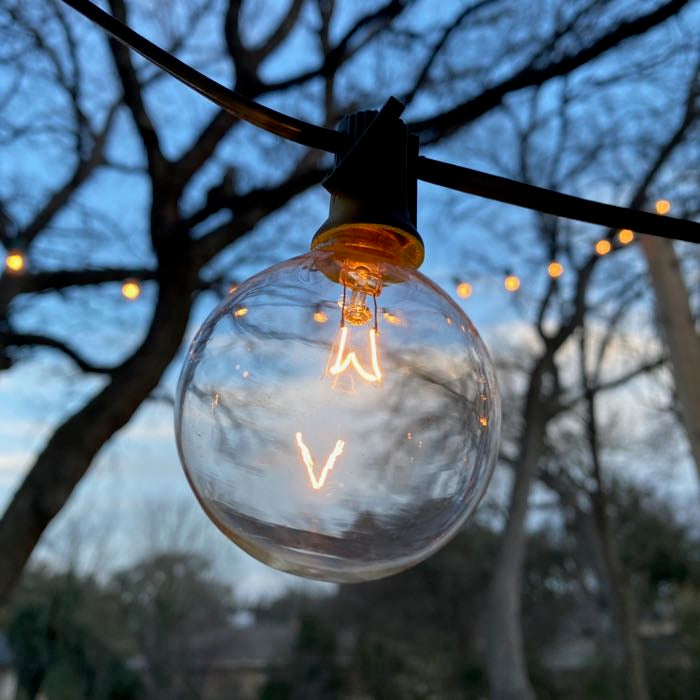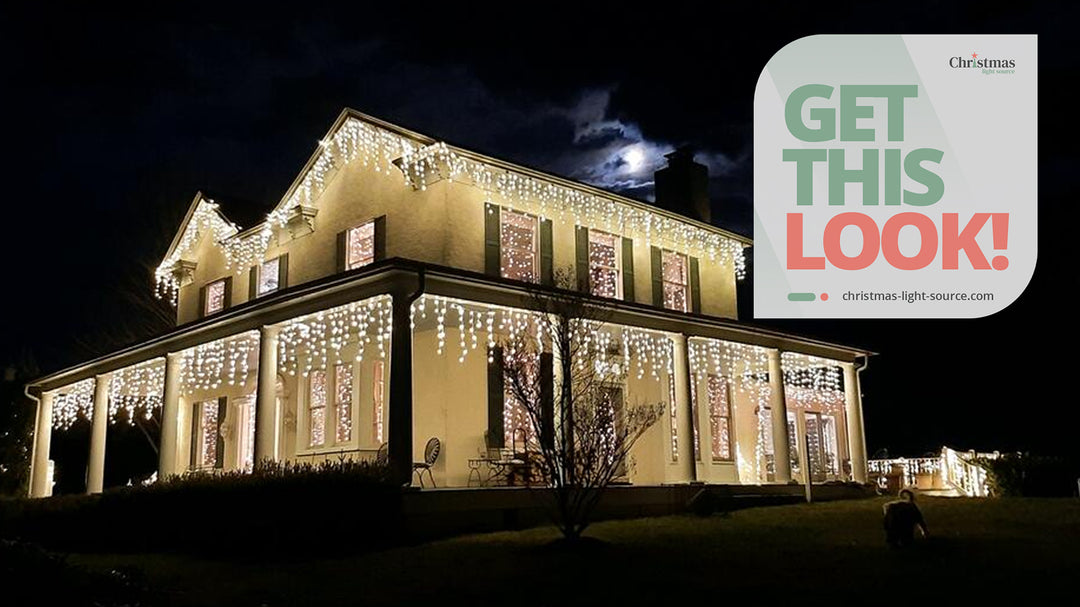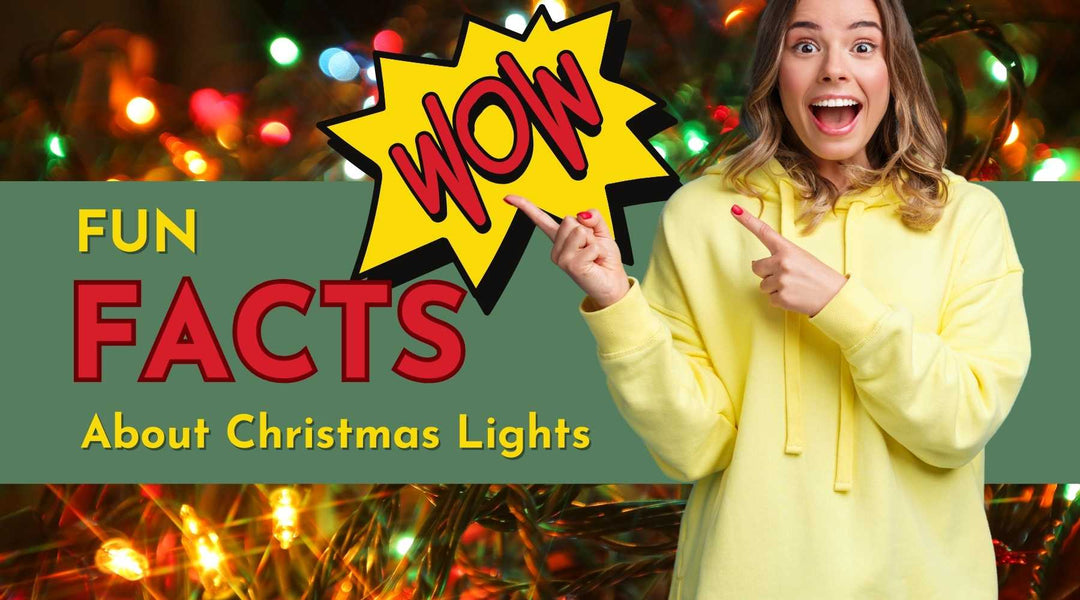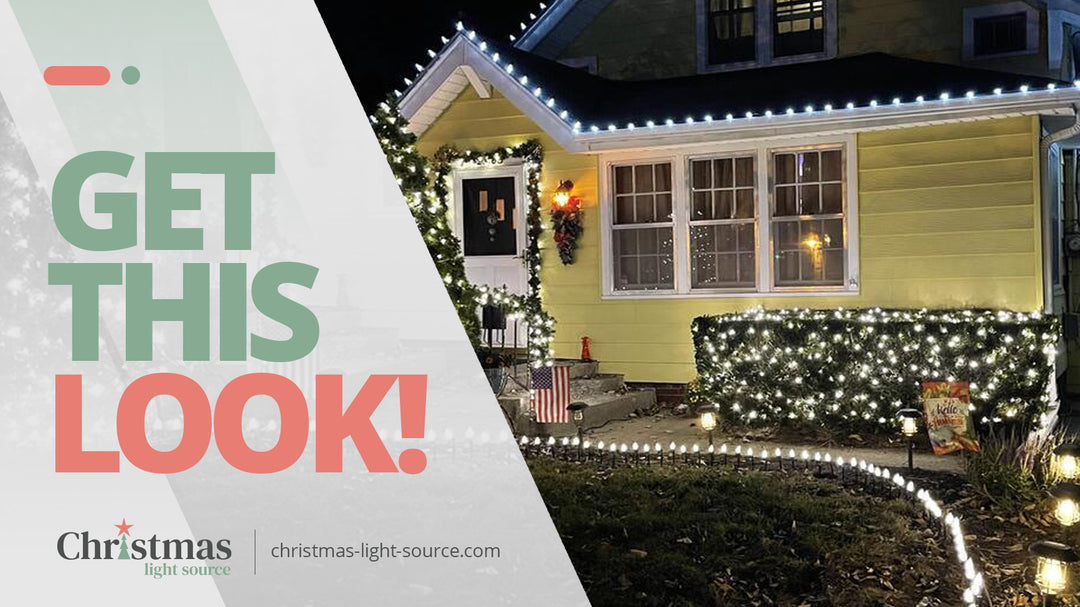How do you know if your Christmas lights are LED?

Or How do I know if my LED Christmas lights are incandescent or LED?
Short Answer
While it is sometimes confusing to tell them apart, there are a few differences between LED and incandescent Christmas lights. Knowing the signs will help you identify your style of light strings if it isn't immediately obvious. Look for heating up under operation, the presence of a filament, glass or plastic bulbs, color quality, and how many you can run in series to determine which style of lights you are working with.
Long Answer
Take a few simple steps to determine if your lights are incandescent or LED.
- Look for glass bulbs. If your Christmas lights have glass bulbs then more than likely they are incandescent, not LED. Ninety-nine percent of the time (we have seen glass LED bulbs in the marketplace but these are uncommon) if the light bulb in a string is glass the set is not LED.
- Do the lights warm up? Incandescent lights make light by heating a filament. (They warm up.) LED lights create light when protons are energized and travel through valence/energy bands. Light is produced as they move to a lower level energy band and give off energy/light. This is a super complicated way of saying they don't create light with heat. So, if your lights are plugged in for half an hour and they are still room temperature, more than likely they are LED.
-
Look at the bulb to see if you can actually see an "old-fashioned" filament in the bulb. Especially in mini lights (small Christmas tree lights) this is a pretty clear indication that the lights are NOT LED.
Keep in mind that in larger, retro-style bulbs, some LED manufacturers are synthesizing a type of "filament" to give them an incandescent look. AND! Sometimes they are even glass. In this case go to suggestion #2 and see if they warm up. -
Take a second look at the color. LED lights have a different look than traditional lights especially in the colors (red, green, blue) and pure, bright white. LED lights have a more "electric" look.
Here is a photo of a row of LED and incandescent icicle lights installed on the same roofline. This perfectly illustrates the visual difference between the two styles of lights. The light strings on the left are LED and the warmer lights on the right are traditional incandescent string.

The filaments of incandescent bulbs tent to make the color of the bulbs lean more towards the yellow side of spectrum.
- 5. Read the tags on the lights or read their box to see how many can be run in series. As a rule of thumb with a standard 22 gauge wiring, incandescent lights can only be run with 500 bulbs total in series. That's 5 100-light strings or 10 50-light strings.
LED lights can be run 20, 30, 40, or more light in series in a single run so if your light sets have this kind of specification, they are more than likely semiconductor rather than incandescent based.
Summary
If you aren't sure if you have LED or incandescent lights take the following steps:
Check to see if the bulb outer casing is glass or plastic
- Turn them on for 20 minutes and gingerly touch a bulb to see if it's hot
- Look for a filament
- Ask yourself if the color of the light string is other-worldly
- Find out how many you can run in series
Regardless of what types of lights are in your installation, operate them with supervision, install them with common sense, and have a Master Electrician check out your project if you have questions about the condition of your wiring, your wiring diagram, or if you blow a breaker.





